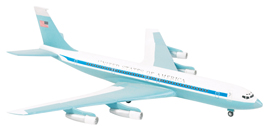Here’s a question and answer, Q&A session on airport security – with Mark Stevens, of DNA Tracker.
Question: What do you feel are currently the biggest threats to airports?
Answer: I think the obvious answer to this is domestic and international terrorism. As to the form that takes, we’ve seen an incredible diversity in the approach to attacking airports, from the hi-tech shoe bombs and chemical IEDs to the simpler but no less potentially devastating ‘smash and grab’ attacks, as seen at Glasgow airport in 2007. By its nature, terrorism is an evolving enemy that constantly adapts to the security measures we put in place to combat it. But the nature and sheer volume of international travel means that airports also face far less overt challenges, needing strict protocols for anything from a global outbreak and virus contamination to traditional problems such as smuggling.
Q) What do you feel existing airport security systems lack, what are the key weaknesses?
A: With the appropriate systems in place, the ability to gather a wealth of information is available to security officials. But this is a double-edged sword, with the volume of video footage, passenger information and other key details can easily overwhelm staff. We in the security systems sector need to provide a solution that better sifts through the data to identify threats. There should also be improved integration between the different security systems, with a central hub collating all device and human input to form a cohesive, real-time overview.
Q) Looking forward, what do you see as the biggest danger to airport security?
A: The battle against security threats is very much an arms race between those researching and developing security solutions and those that try to circumvent them and therefore it’s rare that we see a revolutionary tactic adopted that completely bypasses all of the precautions and safeguards airports set up. I would say, however, that high-value target airports face an increased threat from cyber-warfare. Software and networked systems must be afforded the most robust electronic defence and shielding systems available to protect both against hackers and electromagnetic interference.
Q) And what innovations or emerging technologies do you think we’ll be seeing in airport security over the coming years?
A: We are already beginning to see the next generation of security solutions in prototype body and weapon detection scanners, more advanced camera tracking, fiber optic perimeter intrusion detection systems and DNA Tracker’s own real-time mobile phone tracking system. I fully expect to see a technological replacement for the sniffer dog within the next decade and beyond that there could be some really exciting developments in the field of nanotechnology which could help monitor air particles for traces of biological contamination.
About Mark Stevens
The managing director of DNA Tracker, is in the field of mobile tracking. Products are designed to protect and monitor airports, prisons, high-volume passenger terminals and other locations of high risk. He launched the latest system to international security and intelligence officials at the 2012 Farnborough Air Show. The system has been developed for security and policing, using geo-fencing and other technologies to find, identify and track the movements of devices that enter a ring-fenced zone in real time.










